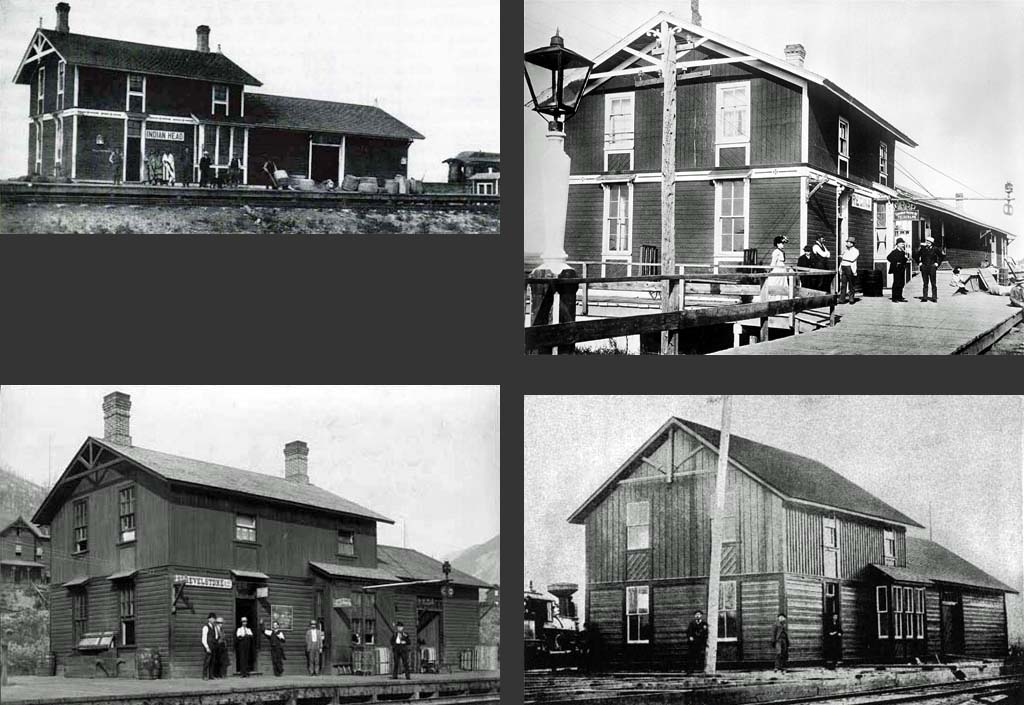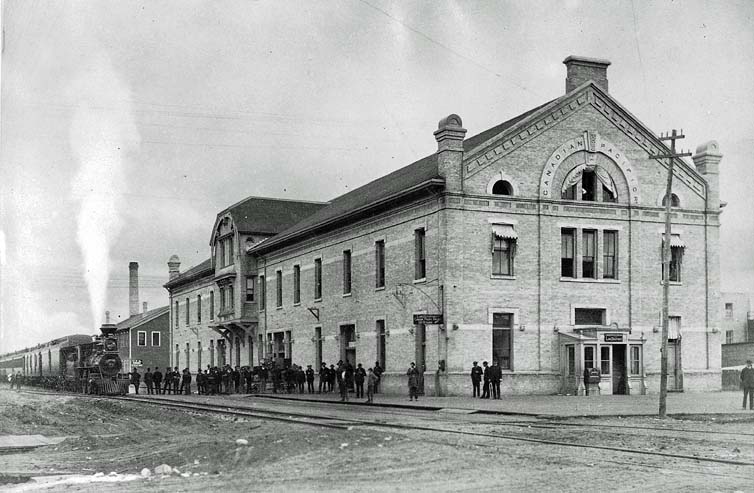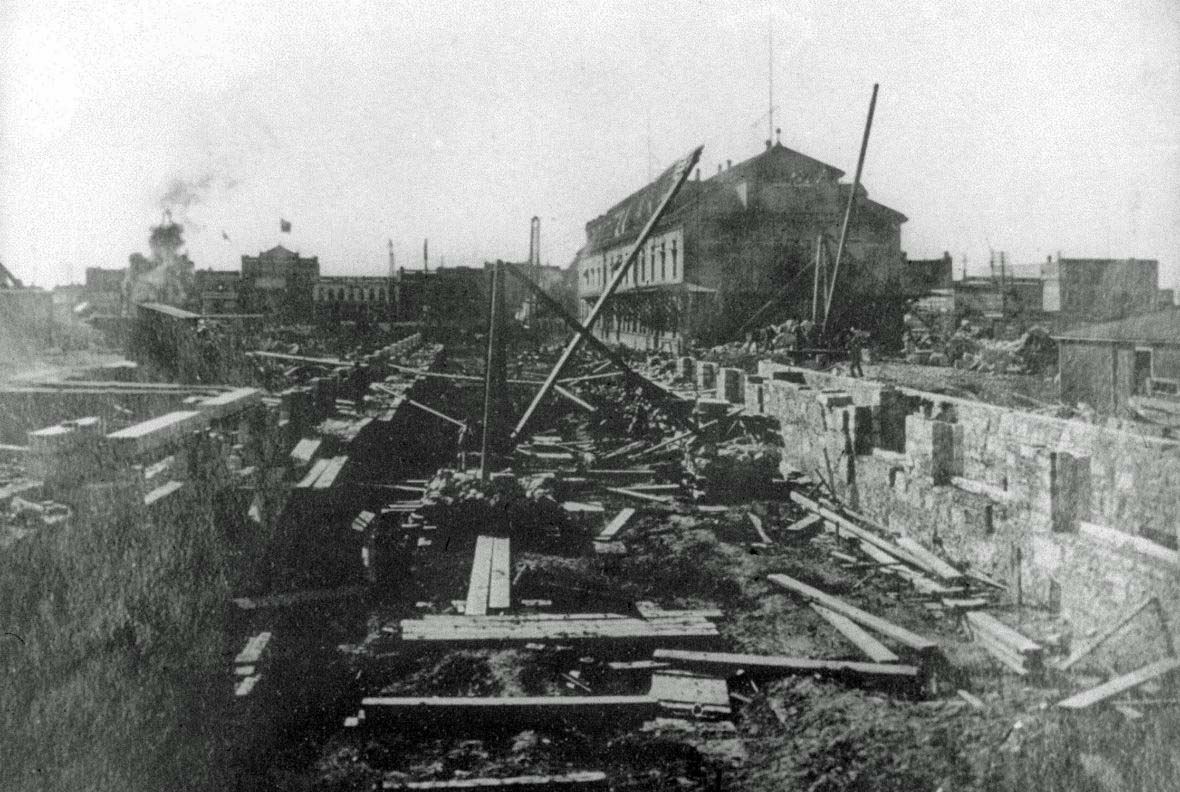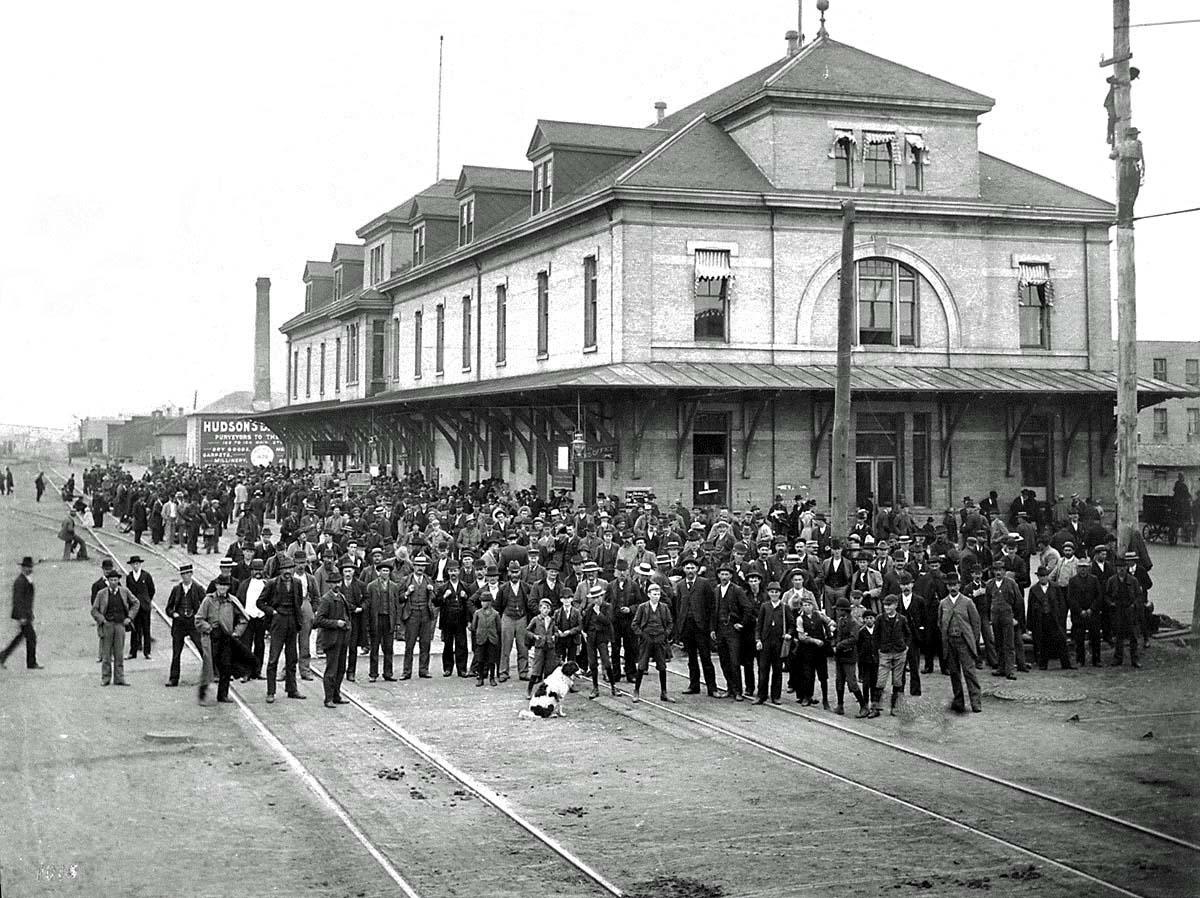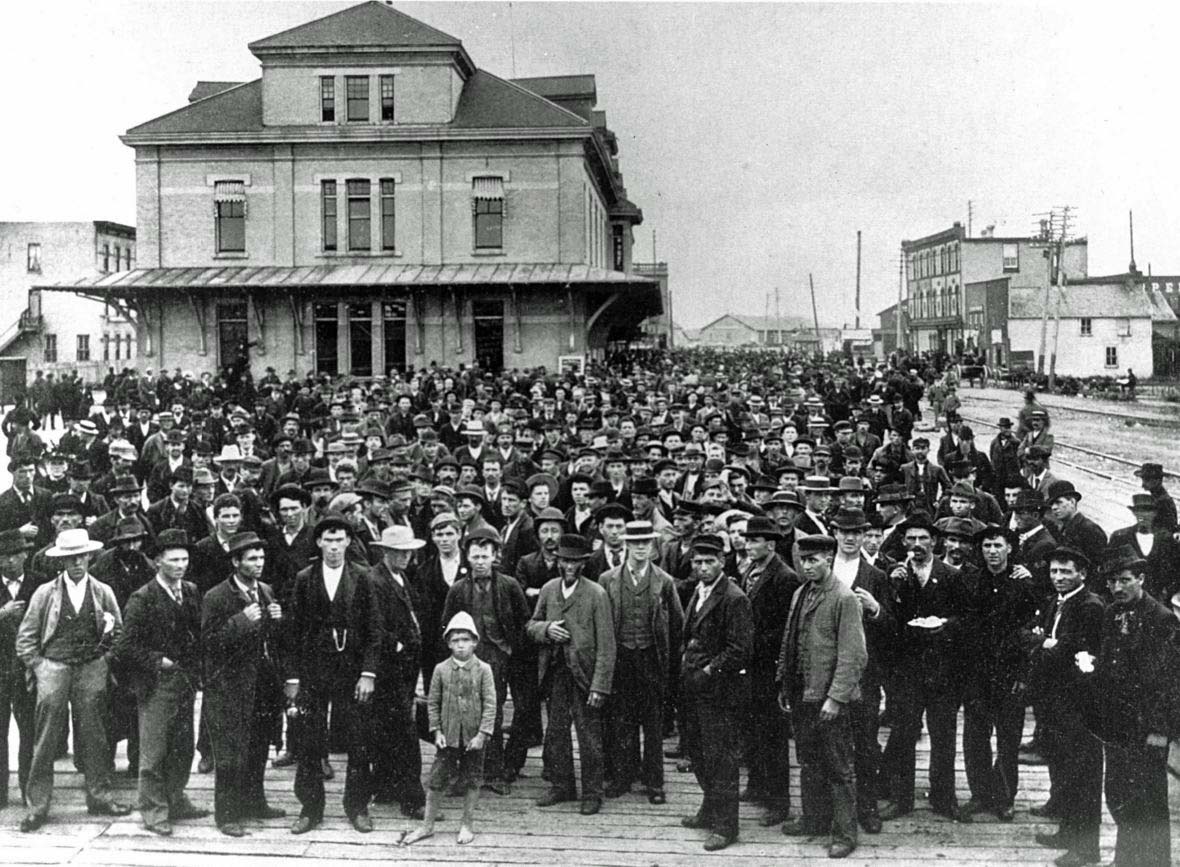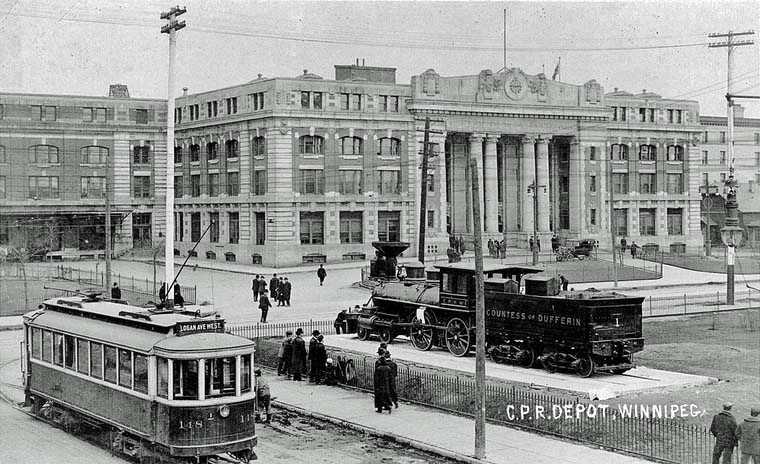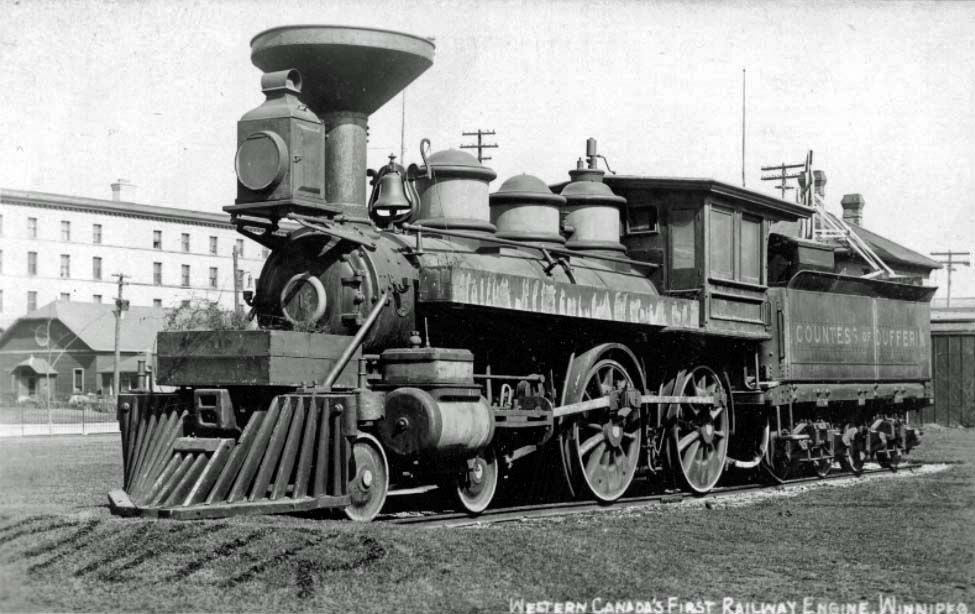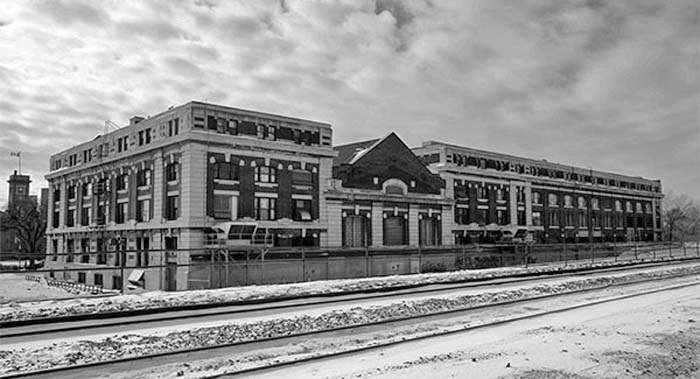Photographs of Canadian Pacific Railway's second, third, and fourth stations are shown below but a time consuming search of internet photo archives could not locate a photo of Winnipeg's first station. It might have looked like many other early CPR stations such as this: Typical early CPR stations across Canada are similar to this design. The inclusion of living quarters within a station was initiated by the CPR. Their very first standard plan, used mostly along the mainline, provided space on the second storey for the station agent and his family. A freight and baggage shed extending from the main building created a long uninteresting roof line. Architectural ornamentation was also minimal in favour of simplicity and low cost. The distinctive bracketed overhang of other stations was also ignored. There were a number of these earliest designs constructed as shown below:
Clockwise from upper left, Indian Head Saskatchewan 1882, Regina Saskatchewan circa 1880, Revelstoke British Columbia circa 1890, Sudbury Ontario 1884 (possibly the second station and without chimneys!).
The second Canadian Pacific Railway Winnipeg station was destroyed by fire in 1886 and replaced by a third station which was apparently constucted on the same site - 1884 William McFarlane Notman - McCord Museum VIEW-1425.
The third station is seen in the background but what is this foundation in the foreground? Is it new construction or a building being demosished? - date? photographer?
A large group of men, boys, and a dog stand around the third Winnipeg station while two men have climbed a pole - date? photographer?
This photo used on a postcard mail dated 30 Aug 1906 and captioned "Harvesters Arrival at C.P.R. Depot - Winnipeg, Man." shows the third station. But if they've just arrived, where's the train? Notice the barefoot boy front and center - Circa 1900? photographer?
This fourth Winnipeg station was designed by the prominent architectural firm of Edward & W.S. Maxwell. Constructed between 1904 and 1906 it was enlarged in 1915 continuing to be used as a passenger terminal until 1978. Displayed in Sir William Whyte Park across Higgins Avenue was the Countess of Dufferin, the first locomotive to arrive in 1877 at Winnipeg by barge along the Red River from Minnesota. In 1883 the locomotive ownership was transferred to Canadian Pacific where it became their number 151 - 1913 Photographer?
Looking dirty and forgotten with empty flower boxes on the pilot and running board the Countess of Dufferin rests in Sir William Whyte Park - Date? Photographer?
No longer a station but still Winnipeg number four seen from the track side - Feb 2018 George Penner. |


